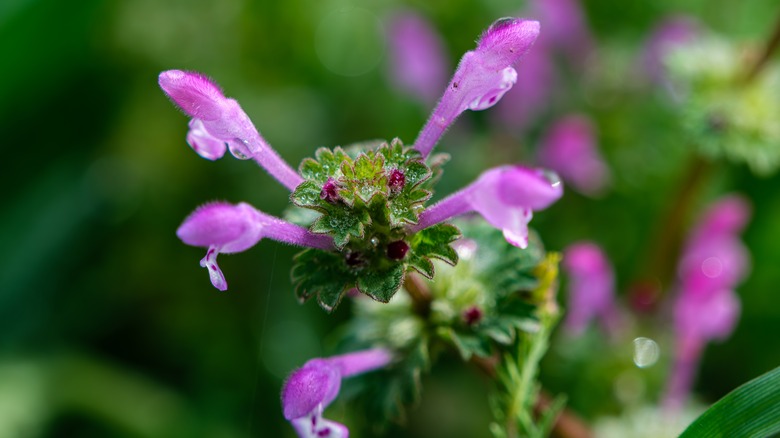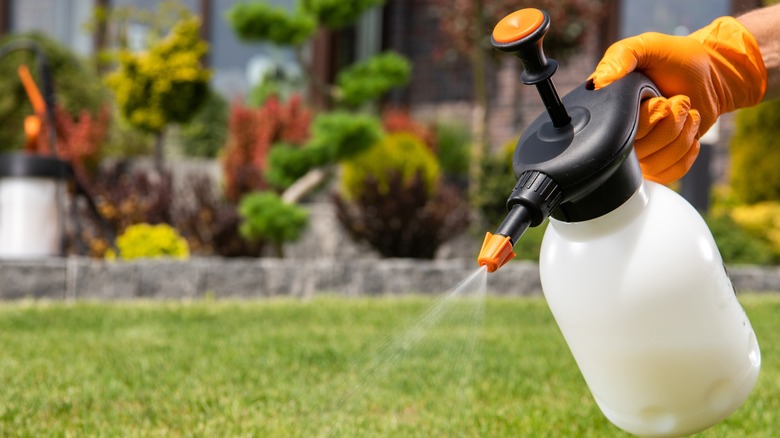The Best Type Of Weed-Killer For Wiping Out Pesky Henbit
We may receive a commission on purchases made from links.
With their pink-purple flowers and heart-shaped leaves, it's hard to believe this broadleaf plant is a weed. But you're clearly not deceived by that charming exterior, and for good reason. Without proper management, henbit (Lamium amplexicaule) can easily take over your lawn and compete with your turfgrass for nutrients. While there are many ways to get rid of cool-weather annual weeds in your yard, iron-based herbicides are the best type of weed killer for henbits.
Popular selective weed killers for broadleaf weeds contain 2,4-D, which can damage desired grass along with weeds. On the other hand, iron-based herbicides are more selective because they contain chelated iron (FeHEDTA). This soluble iron is absorbed easily and in larger quantities by broadleaf weeds than turf because the weeds mistake the chemical as a nutrient and keep soaking it up while turf takes just the right quantity it needs and stops. This eventually leads to cell damage and death of the weeds while the grass remains safe. The great part is that all this happens within hours of application. Commercially available iron-based weed killers include Fiesta Selective Post Emergent Turf Weed Killer ($79.00 for a gallon), Bonide Weed Beater Fe ($39.99 for a gallon), Natria Lawn Weed and Disease Control ($8.49 for a 24-ounce spray) and Bonide's Captain Jack's Lawnweed Brew ($16.99 for a 16-ounce bottle). Note that some are available as concentrates, which will need diluting, while others are ready-to-use liquids. Be sure to follow the label instructions for any option you might decide to get.
Things to note before using iron-based weed killers
Although the EPA says these types of weed killers are relatively non-toxic to mammals, birds, fish and aquatic invertebrates, and other non-target insects, it is still preferable to apply them before the weed blooms to reduce any negative effect on pollinators, whether direct or indirect. Therefore, the best time to get rid of henbit is in early spring, as the flowers typically start to bloom by mid-spring. Another reason to deal with this weed before it flowers is that it produces up to 2,000 seeds per plant after blooming. These seeds spread easily and remain viable in the soil for up to five years, so you really don't want them appearing in the first place unless you plan on dealing with these weeds for years to come. Unfortunately, iron-based weed killers are post-emergent herbicides, so you must wait to see the young, growing henbit before attacking them.
For long-term weed control, it is best to reapply this treatment four weeks after the first application but no more than four applications per year. After getting rid of henbit, you should also consider taking non-chemical preventive actions to keep away henbit and other sneaky weeds that can wreak havoc on your lawn in winter. Activities that help improve turf density, like proper mowing, fertilizing, aerating, and irrigation, would be helpful in your fight to keep your lawn henbit-free.

